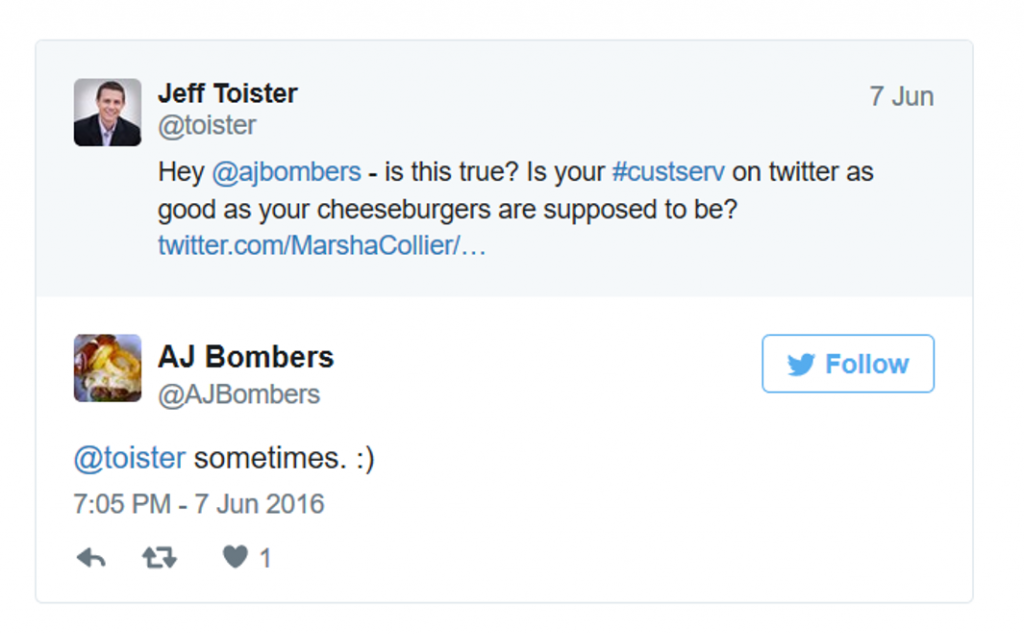Let’s start with a bonus stat.
The 2015 Customer Experience Management Benchmark report from Execs in the Know found that only 64 percent of companies train their social media agents.
That’s startling. Contact centers regularly spend six weeks or more training agents who take phone calls, but social media agents get zip?!
The big question is why. Perhaps these companies don’t know what training to provide. Or, they don’t have access to a quality training program.
Fear not, companies. Lynda.com has just released my latest training video, How to Serve Customers Via Social Media.
This means companies no longer have an excuse for not training their social media agents. In honor of this momentous occasion, I’ve compiled three surprising stats about social media customer service.
And, if you stick around to the end of the post (or scroll, cheater), I’ll show you how to access the course for free.
Stat #1: Retailers respond to only 18.2% of customer tweets.
Companies routinely ignore their customers.
It’s the equivalent of not answering a phone call or responding to an email. Or, imagine walking into a retail store and asking for assistance and then having that person just ignore you! (Ok, all of those things do happen.)
Sprout Social compiles a quarterly social media index report. Their 2016 Q1 report shared the abysmal response rate from retailers. The worst part? Retailers were the leading industry in terms of responsiveness.
Here’s an example of doing it right.
Social media guru Marsha Collier mentioned AJ Bombers in a recent #custserv tweet chat (every Tuesday, 6pm Pacific). I decided to see if they really were on the ball. They were:

Guess where I’m going for a burger the next time I’m in Milwaukee?
Stat #2: 67% of customers are influenced by online reviews
This stat comes from Moz. Check out their recent article for a more in-depth run-down.
Companies large and small are missing the boat on this oft-ignored corner of the social media world. The biggest opportunity here is your business could be using positive reviews to directly increase sales. Here’s how.
Let’s say a customer wants to find a good bistro restaurant in San Diego. So, they naturally google “bistro san diego.”
Here’s what popped up on my screen:
Notice that Google shares three options of restaurants that match my search criteria and are also highly rated. Right away, this should lead you to the obvious conclusion that good ratings equal better search results.
Now, let’s look at what happens when I click on Terra, a bistro with a stellar 4.9 star rating:
I can see reviews, check out their menu, and visualize where they’re located. Google is practically leading me there! I’m one click away from booking my reservation on Open Table.
So, my big question, is why oh why do so many businesses large and small ignore these reviews?!
Here’s a chance to engage your current customers AND entice future ones. Do yourself a favor and spend a few minutes reading up on Google My Business to see how it can help you improve customer service and win more customers!
You can also check out this blog post on using Yelp reviews to improve your business. The basic concepts work the same on Google, Facebook, or any other review platform.
Stat #3: 61% of Fortune 500 CEOs have no social media presence
Domo does an annual survey to track down this stat.
There’s a good chance that not being on social also means “doesn’t understand social.” I think this is one of the main reasons why so many companies struggle with social media customer service.
Let me tell you a story to illustrate why this is important.
In 1998 I was working for a catalog company called Chadwicks of Boston. When people wanted to order merchandise, they’d either call a 1-800 number or mail their order. (A few people faxed. There’s always someone who’s different.) The internet was exploding during this time, but Chadwicks wasn’t on it.
Dan, the company’s President, resisted the idea of exploring e-commerce. He thought the internet might just be a fad. Kind of like how blacksmiths doubled down on horseshoes when the car first came out.
Needless to say, sales slowly eroded as competitors went online. And Dan, he was eventually fired.
Don’t be like Dan.
Get the Training Video
Ok, you’ve read through the entire post or you scrolled like a boss. Either way, here’s how you can take my new course for free.
First, check to see if you have a Lynda.com account. If you do, you already get the course for free. Enjoy!
If you don’t, drop my name and get a 10-day trial account. (Special bonus – you’ll get access to Lynda’s entire library during this time.)
Next, click here to access the course.





